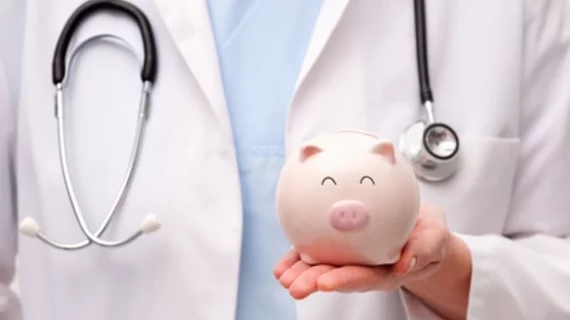Magnitude of industry payments to CV lab directors of great concern
Medical directors of cardiac catheterization (CC) and electrophysiology (EP) labs receive three to four times the amount of money from pharmaceutical companies and device manufacturers as other interventional cardiologists in the same zip code, according to a JAMA Internal Medicine study, suggesting those directors could be biased in which therapies they recommend and utilize.
In a research letter published June 17, Amarnath Annapureddy, MD, a postdoctoral associate at the Yale School of Medicine, and his colleagues said CC and EP laboratory directors play a central role in the selection of devices and medications that are available within a hospital, creating the potential for major conflicts of interest (COIs) if those directors are paid to promote certain therapies. The National Academy of Medicine considers any payment of $10,000 or more a significant COI.
Annapureddy et al. used data from the Open Payments Program — a congressionally mandated transparency program that’s required biomedical industry and group-purchasing organizations to report payments to physicians and hospitals since 2013—to characterize patterns of industry payments to CC and EP lab directors. The authors collected non-research payment data for the top 100 CV hospitals in the U.S. as ranked by the U.S. News & World Report, comparing those numbers to payments made to local interventional cardiologists (ICs) in the same time period.
The team found that in 2017, directors of CC and EP laboratories affiliated with top 100 hospitals received $1,416,232 and $2,307,504 from industry, respectively. Of a total 195 lab directors, just four EP directors and seven IC directors received no payments that year.
Average payments to CC lab directors in 2017 worked out to $3,203 — significantly higher than the $1,064 ICs received. EP lab directors received an average of $10,521, while EP physicians practicing in the same zip codes racked up just $2,900. Electrophysiologists received 74% of their total payments from device manufacturers; ICs received 61%.
Annapureddy and co-authors reported that nearly one-third of CC laboratory directors and almost half of EP lab directors received payments of $10,000 or more in 2017, with around a third of payments attributed to compensation for services like speaking at dinner talks. The value of payments to laboratory directors from top 100 hospitals correlated poorly with hospital scores and weakly with the Hirsch index.
The authors said the fact that a large proportion of CC and EP laboratory directors have “notable” financial relationships with industry could undermine the public’s trust in the medical community — something JAMA Internal Medicine editor Rita F. Redberg, MD, agrees with.
“The prevalence of financial relationships and the magnitude of the payments are of great concern,” Redberg wrote in an editor’s note. “Previous studies have shown that small payments, even merely a meal, can influence physician prescribing.”
Medical devices are expensive, she said, and while their cost is passed on to insurers, we’ll all eventually pay with higher healthcare costs, taxes and insurance premiums. She said physicians should disclose to their patients any financial relationship they have with the manufacturer of therapies they’re recommending.
“The fact that relationships with industry are common among cardiologists who influence important purchasing decisions, and who furthermore are the ones who decide whether and which device to implant, raises serious questions about whether these decisions are being made wholly in the best interests of patients,” Redberg wrote. “In addition to individual ethical standards, professional society guidelines should prohibit doctors with relationships with industry from participating in decisions about what devices their hospital chooses to purchase.”

